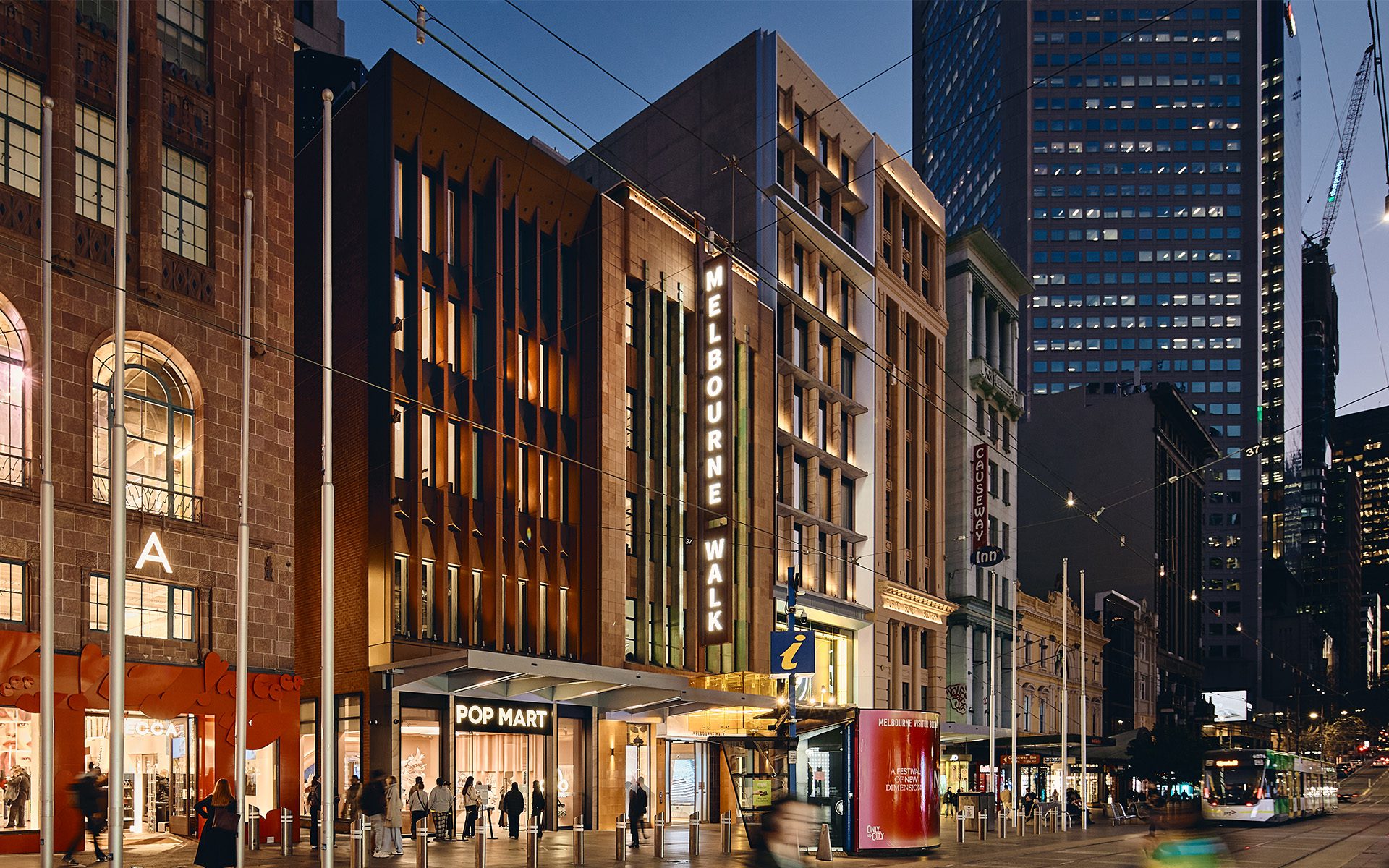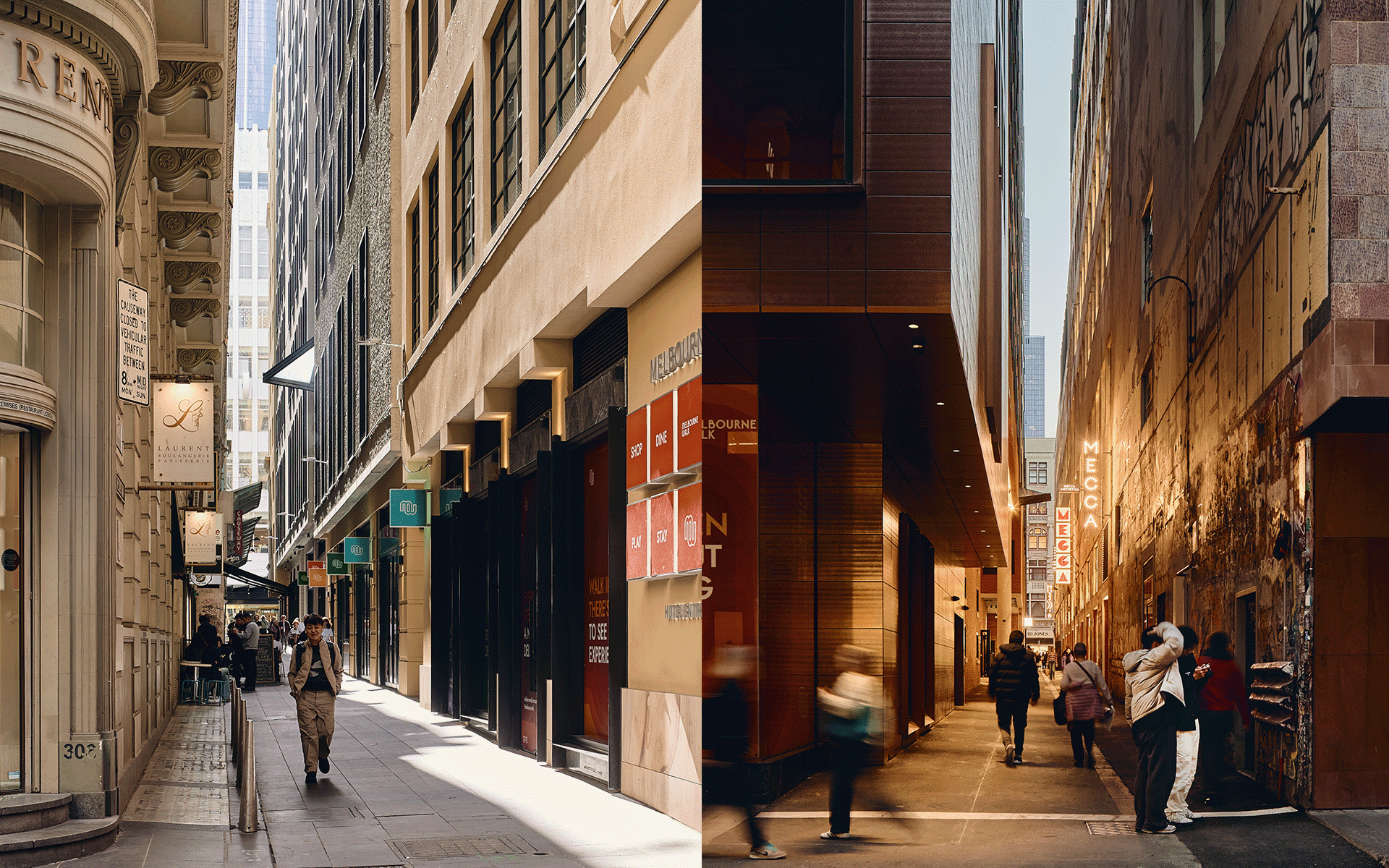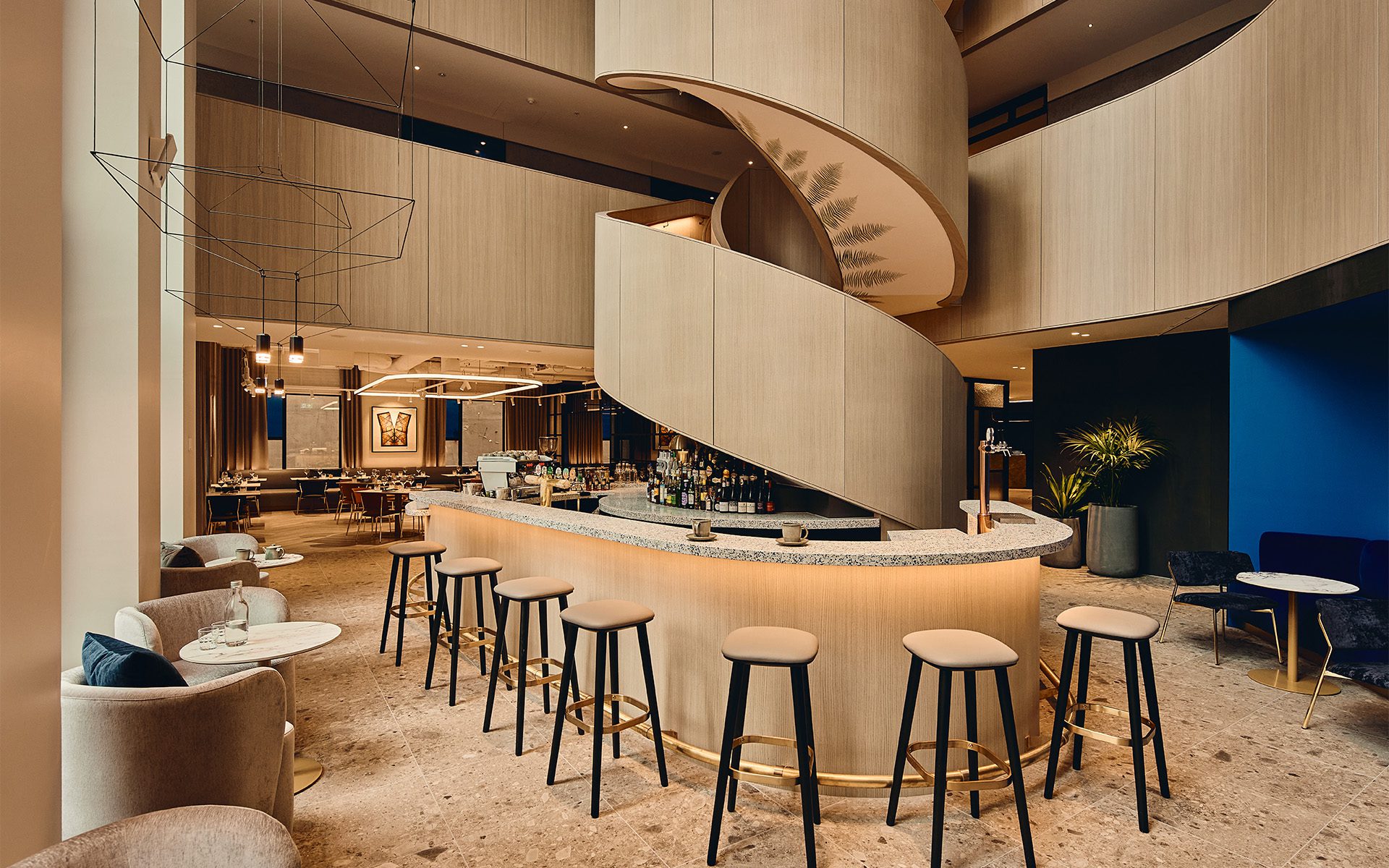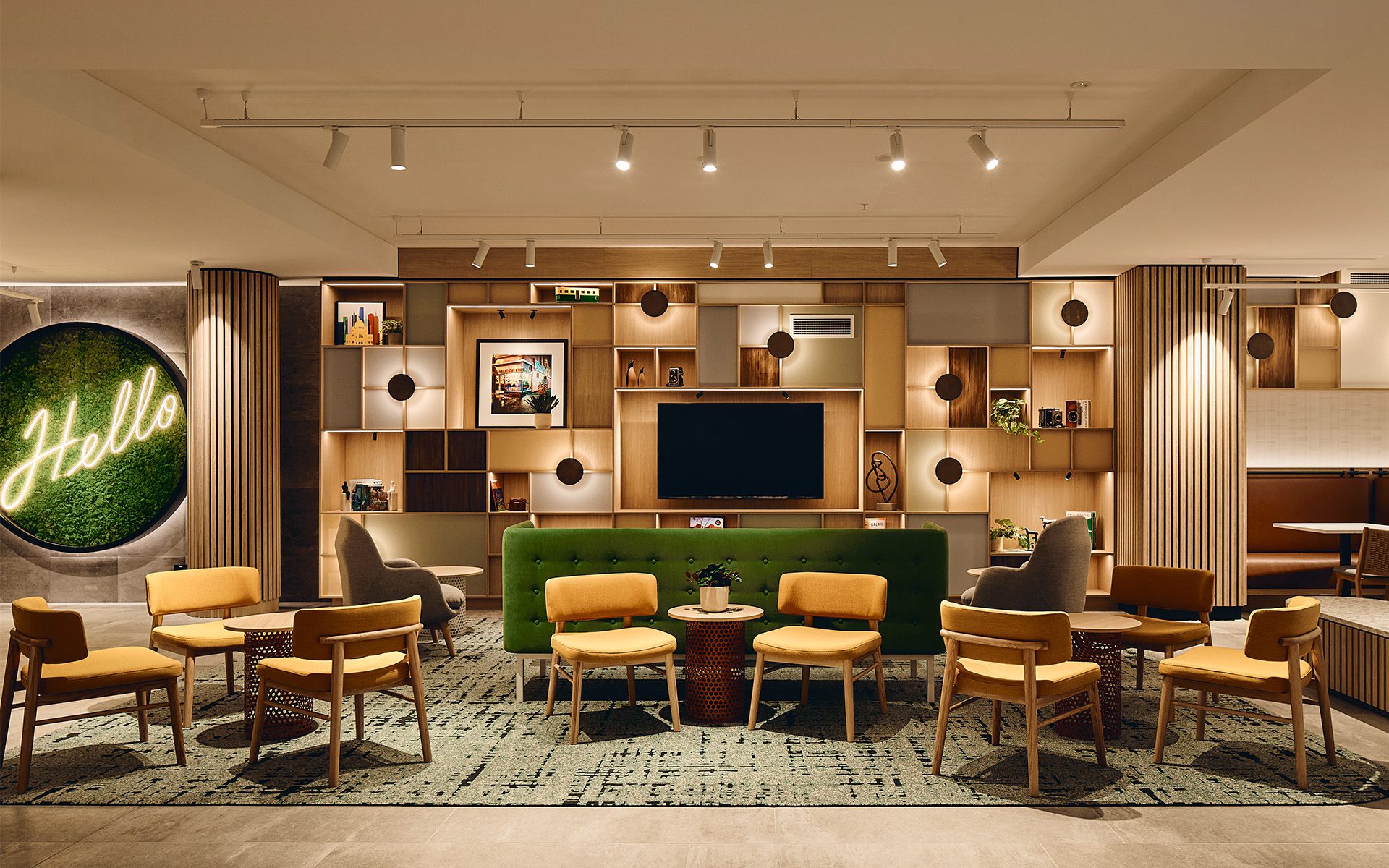The first new development in Bourke Street Mall for over 50 years, Melbourne Walk is a celebration of the city's rich and unique identity, and the centrepiece of its revitalisation.
This landmark inner-city site unites a collection of eight buildings of different eras across an entire block, uniquely positioned at the intersection of Melbourne’s Bourke Street Mall, and the city’s north-south pedestrian laneway network.
Leveraging the site’s central city location, the redevelopment incorporates 6,295sqm of retail and InterContinental Hotel Group’s first Australian dual-branded hotels, a Hotel Indigo and a Holiday Inn, comprising 452 rooms over 9 levels above a 3-level retail podium. New dining and bar offerings include a rooftop bar overlooking Bourke Street.
From the urban scale down to interior detailing, Buchan’s architecture and interior design teams have woven a distinctly Melbourne narrative through every aspect of the design.
- Discipline | Architecture, Interior Design
- Sector I Mixed-Use
- Region | Australia
- Location | Wurundjeri Woi Wurrung Country Melbourne, Victoria
- Client | Steadfast Capital
- Photography I Peter Bennetts
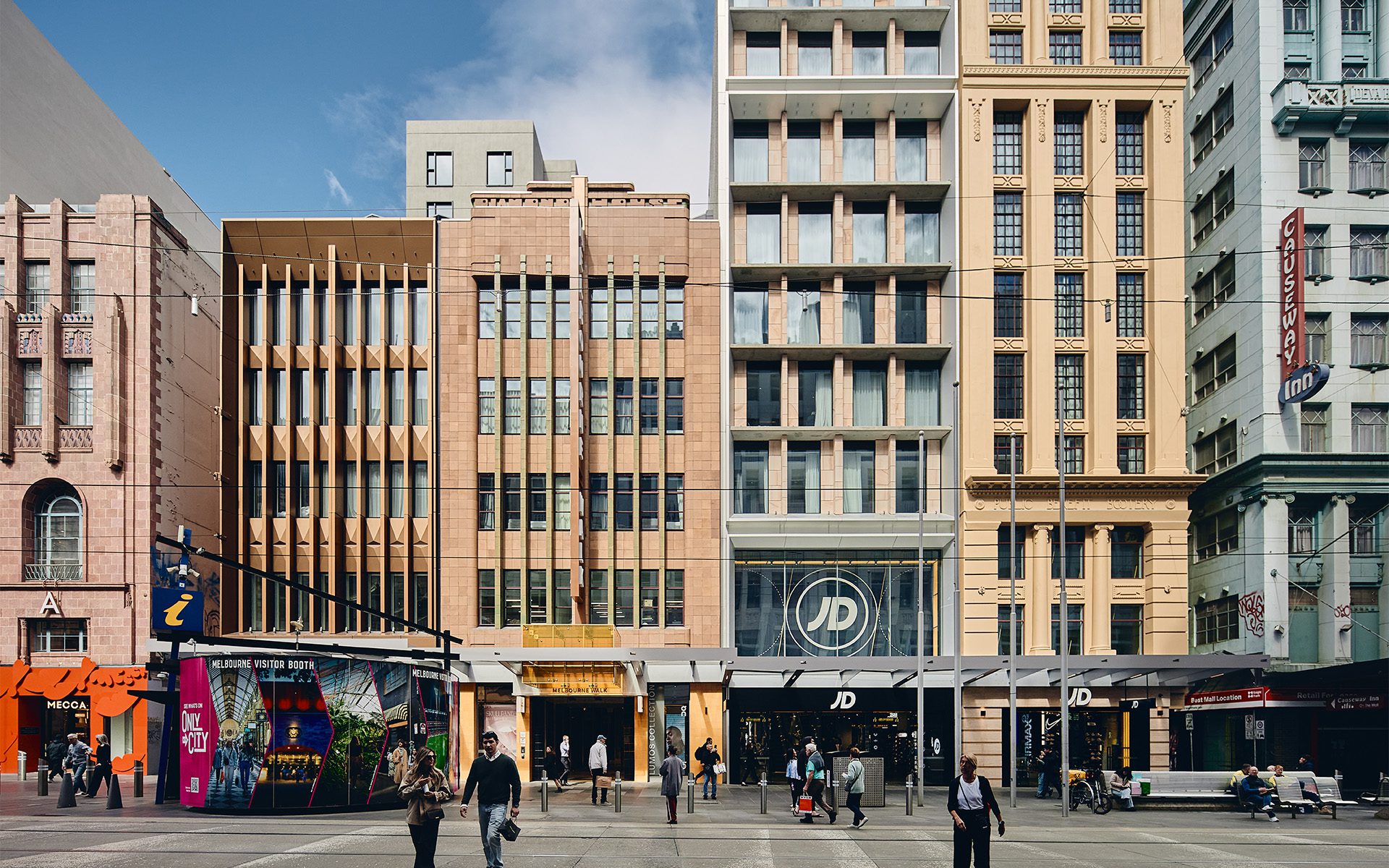
A ‘collection of buildings’
An important aspect of Buchan’s design concept was to retain the sense of a ‘collection of buildings’ while consolidating the block into a singular site. The heritage façades of Diamond House and the Public Benefit Bootery on Bourke Street, and the Allans and York buildings on Little Collins Street, have been restored, preserving streetscapes and neighbourhood character.
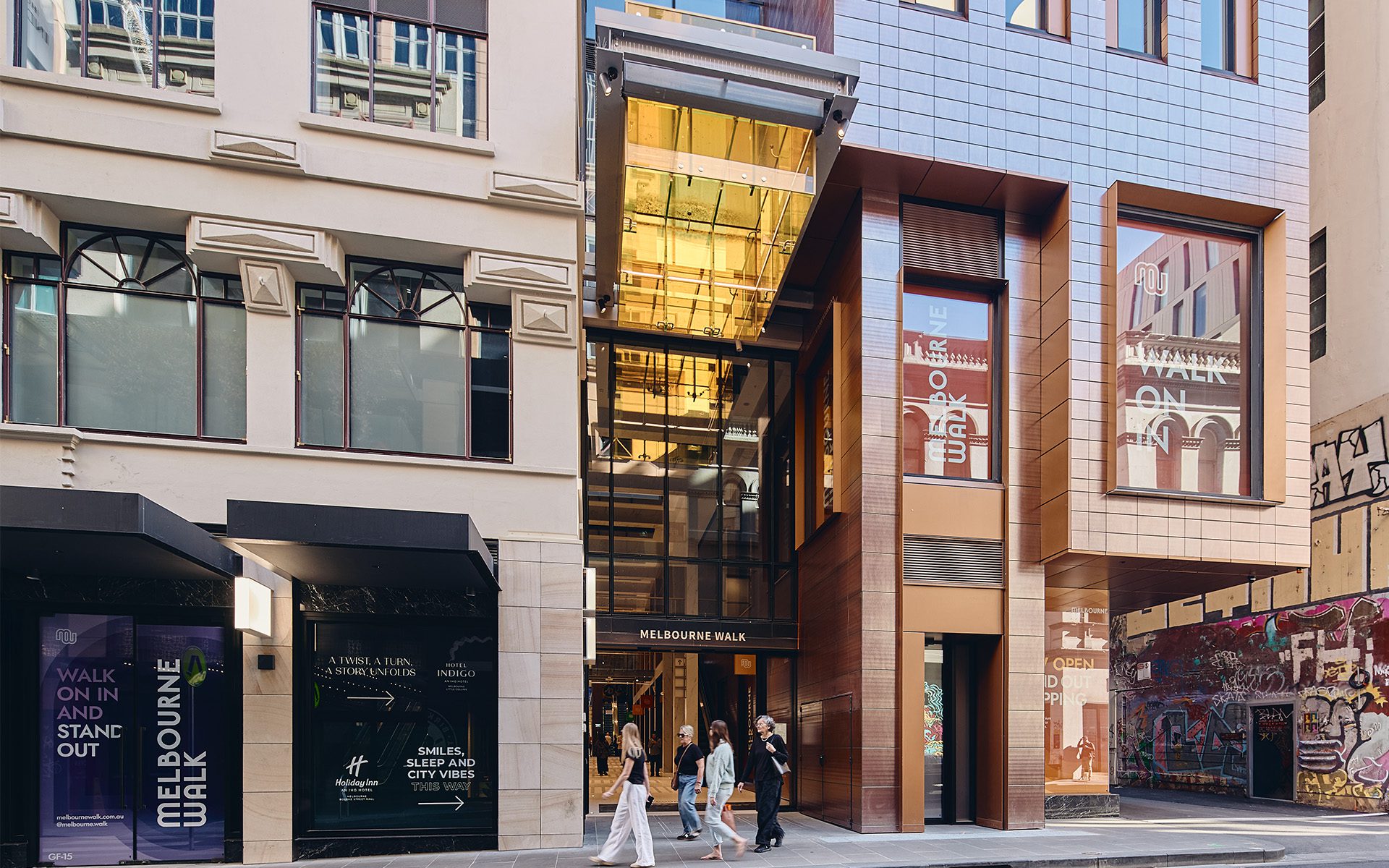
The restored façades are complemented by new façades that take cues from their neighbours. Horizontal and vertical elements are reinterpreted, and blade signs that were prominent in the 1890s have been reinstated.
Heritage façades bookend and wrap into The Causeway – a laneway running north-south between Bourke and Little Collins Streets – giving the laneway corners prominence. The theme of individual buildings continues along The Causeway’s length, expressed in varied windows and architectural finishes. Food and beverage shopfronts support The Causeway’s revival as one of Melbourne’s established ‘foodie’ laneways.
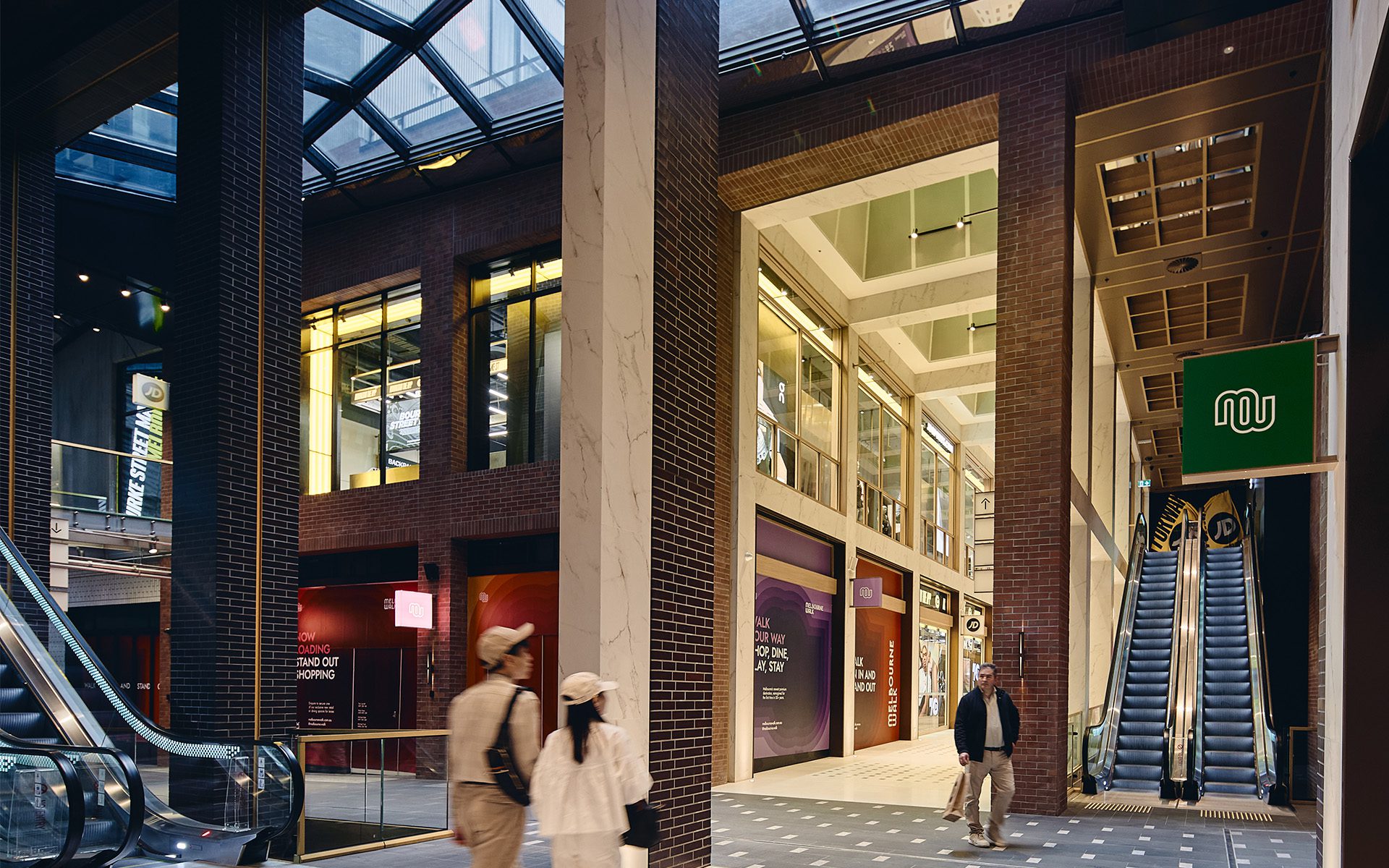
Celebrating Melbourne’s grit and glamour
The historical references in the hotels permeate down through the arcade and lane below, which merge retail glamour with the gritty laneway culture of contemporary Melbourne to create a memorable urban destination for hotel guests and locals alike.
The glass-covered east-west cross lane is a finer-grained, tactile experience anchored by brickwork and bluestone in direct response to the existing laneways at either end.
Glass bricks embedded in the floors, common in Melbourne lanes, allow light to penetrate the basement space.
The criss-crossing internal pedestrian routes and their visible connection to the sky support the ‘collection of buildings’ narrative.
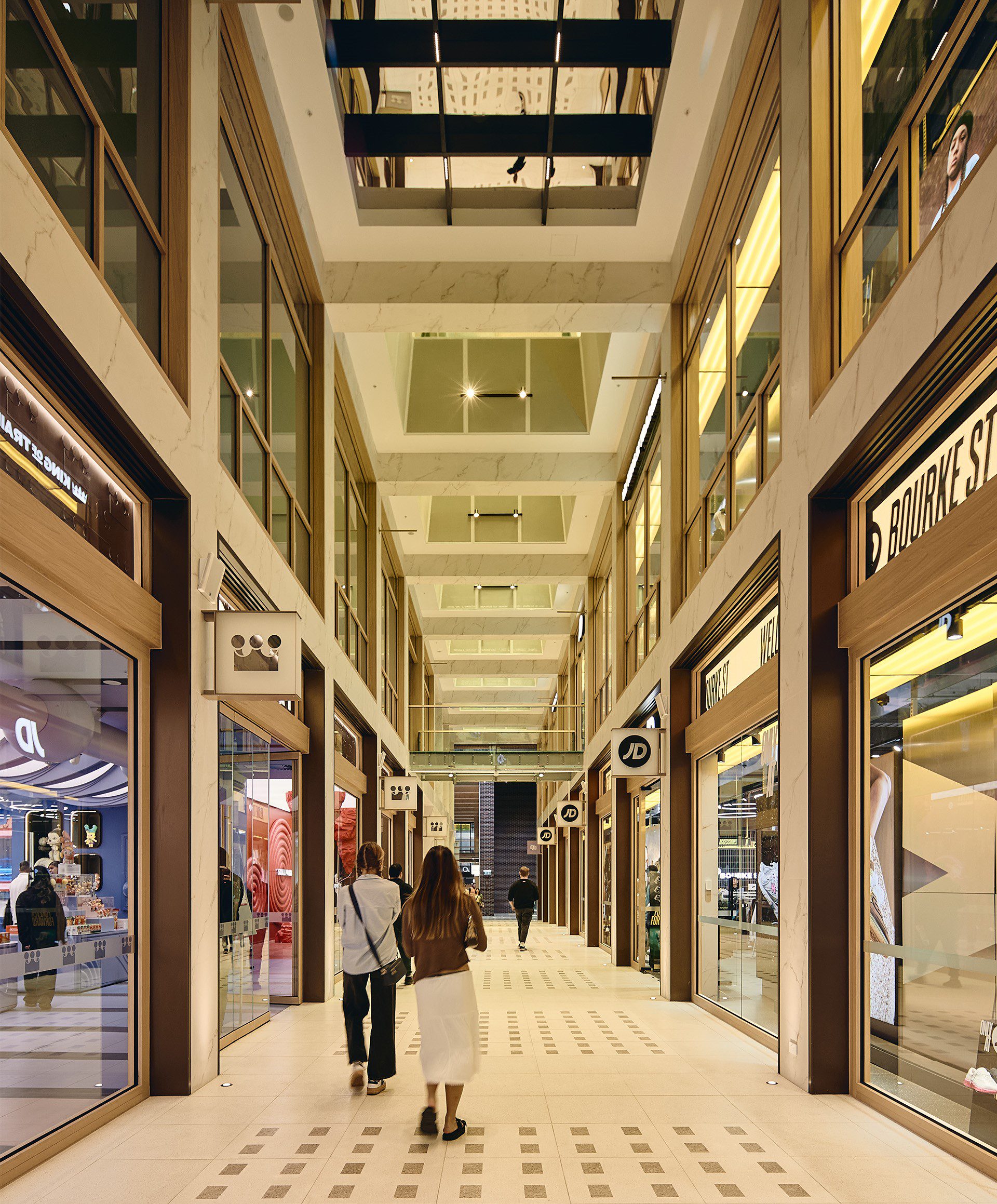
The north-south arcade connects Bourke Street to Little Collins in a modern take on Melbourne’s famed gold-rush arcades. In a nod to this era and its atrium-style structures, gold-tinted skylights run the length of the double-height space, their faceted shape referencing the gemstones of Diamond House’s past. Marble and brass exude quiet luxury, framing windows that are stages for evolving flagship and specialty retail displays.
From the experience of the arcade and laneways down to the fine detail of the hotel rooms, Buchan’s design is a celebration of Melbourne’s rich and unique identity.
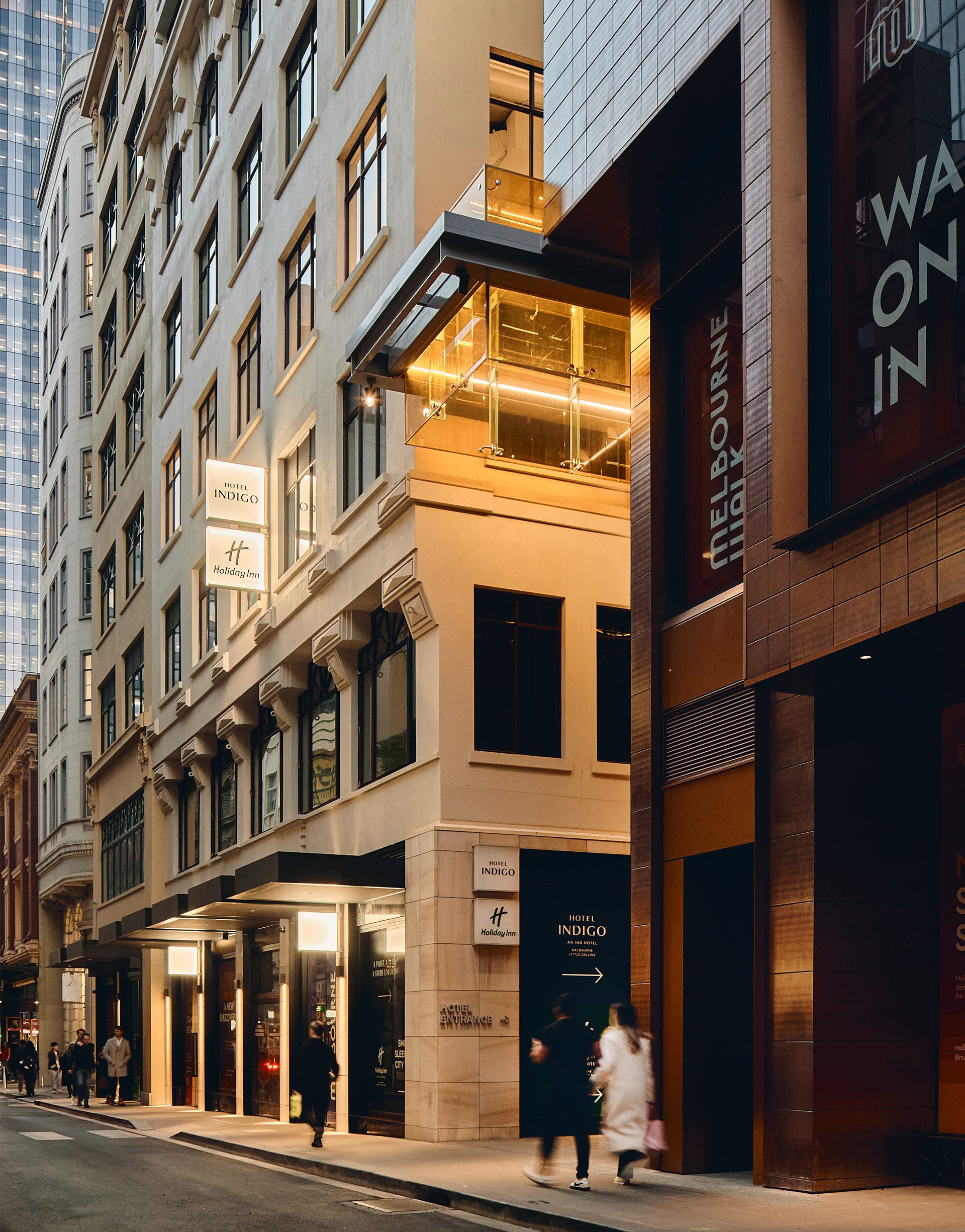
Distinctive hotels and a quirky history
The dual hotels each have a distinct identity and are entered from the arcade.
The Holiday Inn focuses on the joy of travel for all, complemented by warm, natural materials and textures and lush greenery for a calm, home-away-from-home feel, welcoming families.
The Indigo brand focuses on creating bespoke, local experiences with a strong sense of place. The social history of the Melbourne Walk site, with its quirky, historic retailers, underpins the design concept, which invites guests to explore their room and make discoveries in the same way they would explore Melbourne city.
Sustainability strategies
The redevelopment is targeting a 5-star Green Star Rating through the integration of key initiatives, including a 450sqm native courtyard garden, a 40kw solar array, heat island effect mitigation strategies, as well as the use of recycled steel and reductions in concrete. It includes one of Melbourne’s tallest façade retentions to the 100-year-old Public Benefit Bootery.
